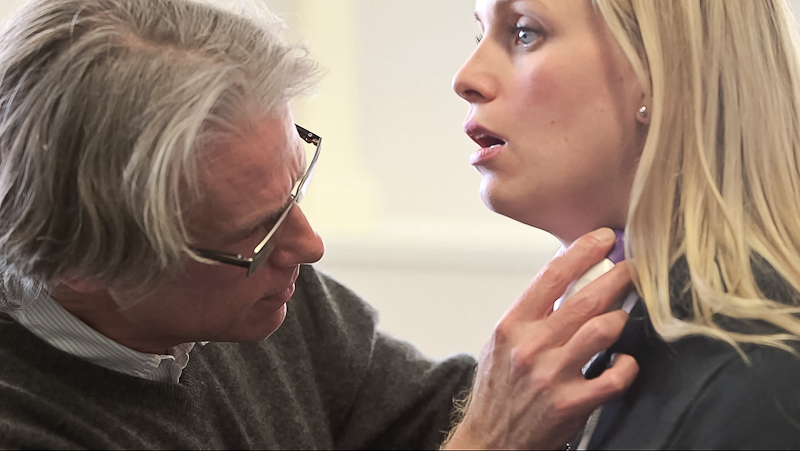
A discovery by a professor at the University of Alberta is turning many singers and actors on to the idea of using a vibrator, but not for its intended purpose.
David Ley, a professor of theatre voice pedagogy at UAlberta, has discovered that applying a hand-held vibrator to a person’s throat greatly reduces muscular tension and increases pitch and variation in a person’s voice.
According to Ley, the idea for the technique came to him while he was helping an actor recover from laryngitis. She was unable to receive a laryngeal massage—the standard practice for loosening the larynx.
“There are a number of people who can’t stand having their hands on their own throat, let alone somebody else’s. So it kind of dawned on me that we use vibrations quite often to alleviate muscular tension, so it should be able to be used in this case,” Ley said.
After hopping into the actor’s car, the pair went down to the local sex shop, where after finding some initial success in reducing tension in her larynx, Ley discovered that the 100 to 120 Hz vibrator offered the best results.
“We realized that it actually stimulated the vocal folds in the throat, and that we could apply it to different points of the skull, and we found that it was a whole lot easier for her to produce sound,” Ley said.
Judy Montana, a second-year history and theory of architecture student at Carleton University, had the therapy done to her four years ago when she was in a high school musical theatre show.
“I was having trouble hitting certain notes, so my vocal coach said to me, ‘why don’t we try this? It’s a little experimental,’ and she pulled out a vibrator,” Montana said.
“I thought, ‘what are you going to do with that?’ I was a bit dubious over whether it would work.”
However, Montana said after four treatments, she had a “completely different voice.”
“Subconsciously you are holding tension in your throat and you just don’t realize it,” Montana said.
Veronica Michelle, who asked that her last name not be disclosed because of the nature of her job, has worked in the sex industry for seven years and is currently a sales associate at Wicked Wanda’s Adult Emporium in Ottawa. She said Ley’s research does not surprise her.
“The thing with vibrators is that they were first released as massagers until someone turned it into a sex toy,” she said.
“Vibrators are basically designed to stimulate nerve endings and increase blood flow, which is why they work so well as massagers and why it medically makes sense why they would help with any voice problems.”
Ley is currently working with a speech pathologist at UAlberta to track the effects and benefits of the technique so he can present it to the scientific and therapeutic community and possibly develop it into a usable product.
According to Ley, one of the problems stopping this technique from being more widespread is getting people to go out and buy the vibrator itself.
“I used this technique on my 84-year-old father, and he thought it was great, but he’s not going to go out and order that,” Ley said. “For some people, there’s a hurdle there, they shrink from the idea.”
Agnes N., a sales associate at Venus Envy in Ottawa, said the stigma towards sex toys originates from a general stigma towards sex.
“People don’t like talking about sex, and they always have an assumption that it’s going to be raunchy,” she added. “It’s just not something they’re used to, and it’s therefore not treated as something that’s part of everyday life.”





